
In this article we will deal with a type of filter that many beginning aquarists find intimidating — the canister filter. New hobbyists tend to see the canister filter as troublesome because it looks more complicated than the overflow filter and is too big or ugly to have in their living room. But a closer look at this type of filter reveals that appearances can be deceiving.
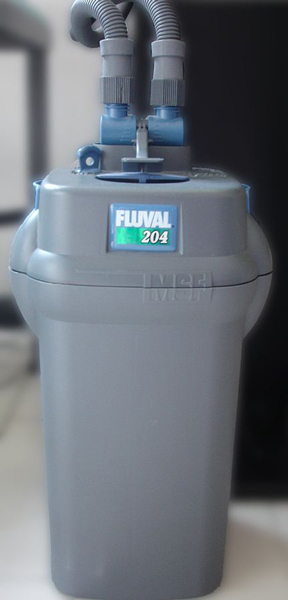
Canister filters are extremely popular and do very well in most aquarium applications.
Power filters are the heart of many aquarium setups. The choice of what kind of filter and specific model to buy should be the result of weighing various factors, including performance, reliability and cost. Canister filters offer some interesting possibilities to the aquarist.
The Brief History
The canister filter design originated with the Vortex canister filters. These worked primarily as mechanical filters by removing particulate matter that degraded water clarity in the aquarium. Vortex has changed somewhat with the times by switching from glass canister bodies to plastic, which is safer. There are also some different inserts for the filter in addition to the original ones.
Then there was the Kordon Mod-Four. This model, with all its hoses and trademark green canister body, was very popular for some time. However, more advanced systems, such as the Eheim filters — with their improved flows and smaller, more efficient motors — also entered the market. Hobbyists began to turn away from the older technology canister filters and pay more attention to the capacity, efficiency and lower power consumption of newer filters.
The Bio-Tech 1 and 2 filters from Hagen emerged in 1978. Though fairly short-lived in the marketplace, the beginnings of Hagen's foray into the canister filter market gave rise to what is now known as the Fluval canister filter. Like Eheim filters, different versions and upgrades of the Fluvals have come and gone. I had one of the very first Fluvals, which was still running quietly on one of my aquariums until it was retired to my collection of "antiques" — but not because it had stopped functioning! Even 20 years ago this filter was particularly economical to operate — it required only 10 watts. However, the flow rates on canister filters back then were not all that great. The Fluval 101 pumped only 60 gallons an hour. That's quite low when compared to the later version, which processed more than 100 gallons each hour.
During the 1980s the marketplace saw different versions of Eheim and Fluval canisters introduced and the emergence of the Magnum canister filter from Marineland. The Magnum canister had the motor in a separate base at the bottom of the filter, unlike the then current models of Fluval and Eheim, where the motor was at the top. The Magnum motor rotated a magnetic impeller in the base of the canister to move water. This type of motor design, as used in the Magnum, is actually a refinement of a design already used in power filters.
In brief, the magnet-drive motor was introduced to the hobby in the 1960s in the Dynaflow power filter, an overflow filter design that hung on the back of the aquariums. The current models from Marineland now feature the epoxy-sealed motor on top design that is used by other manufacturers.
The Purpose of the Canister
The canister filter is designed for maximum volume flow and versatility. Overflow filters cannot provide as much volume as canisters when compared on the basis of size. In addition, canister filters have other features and benefits that are often not apparent to the less-experienced aquarist.
For instance, a canister filter — depending upon how large the filter is and the configuration of the media — can serve as a very inexpensive water-softening device. This can be accomplished by filling a section of the canister with peat moss, which will lower the hardness and pH of the aquarium water. Or, the canister can be filled with special foam blocks (depending upon the filter) to decrease excessive nitrate levels in an aquarium, particularly saltwater aquariums. The versatility of canister filters make them very popular with serious hobbyists.
The Motor
The principles behind power filter motor design and how epoxy-sealed motors work are used by many of the canister filters on the market. Epoxy-sealed motors are mounted with the impellers upside-down in the base of the motor head. One nice feature of an epoxy-filled motor is that it is sealed against water, dust and humidity.
These motors are simple in design. The electrical poles created by a coil surrounding the impeller well cause the magnetized impeller to turn, thereby creating the water flow necessary for the filter's operation. Keep in mind that magnet-drive motors, although working on the same principle, are not the same as epoxy-sealed motors.
In general, epoxy-sealed motors tend to be reliable, extremely quiet and virtually maintenance free. But beware — there are filters on the market that attempt to copy the technology developed and refined by other companies. These filters may have attractive price tags, but the lower prices tend to reflect compromises in design and quality. Stick with the filters that have proven track records and readily available parts.
Magnet-drive motors are fairly reliable and convenient. They come with an on-off switch that may make priming the filter with water easier when getting it ready to run. Most canister filters with epoxy-sealed motors at the top of the filter require you to start a siphon to fill the filter. This may not be a very pleasant procedure for the aquarist.
On the other hand, magnet-drive motors require periodic maintenance and draw substantially more wattage in comparison to epoxy-filled motors. If you don't mind oiling a magnet-drive motor, maintenance may not be a concern for you. However, if you are not very conscientious about things like that, you may not want to deal with this type of motor.
Another problem to consider with a magnet-drive motor is what might happen if it is exposed to water by accident. Water and electricity are a potentially dangerous combination. In addition, this type of motor is exposed to dust and humidity constantly, which could shorten the motor life if it is not properly maintained. Safety is something that needs to be considered when choosing your canister filter.
There are other considerations as well when examining canister filters. For example, look for a self-cleaning impeller well design (or a slotted impeller well) that will ensure removal of slime and deposits from the impeller as it spins.
The impeller should be covered by some type of plastic guard to protect it from foreign matter being trapped inside the well. Such material could jam the impeller and burn out the motor. As an added plus, the cover should have some type of seal or O-ring to ensure a positive seal.
The large O-ring that seals the head to the canister body should be strong and flexible. Good rubber rings will last longer and will resist hardening and decay from hard water conditions, medications and so on. Check to see if the motor is energy efficient. The information concerning power consumption should be printed on the motor itself. Some states also require that cords and plugs have UL (Underwriter's Laboratory) approval, which will be marked somewhere on the box or the product.
Choice of Media
All canister filters come with an extensive variety of media that you can utilize for your particular aquarium setup. It is up to you to decide on the right type of media to use for your aquarium. There are many types and combinations to consider for the job.
Most manufacturers produce activated carbon in a number of grades for use in their filters. These carbons are powdered, pelleted or granulated. All manufacturers claim to have the best, most adsorbent carbons for their filters, and may even manufacture carbon for use in other brands of filters. I recommend using the carbons developed by the maker of the filter unless you find there are problems with their brand, such as phosphates that leach into the water and promote algae growth. In most cases, the company is offering a particular carbon with which the filter can operate to its maximum performance while providing effective chemical filtration.
There are a number of tests that manufacturers claim are performed by "independent research labs" that supposedly demonstrate the superiority of their carbon in comparison with other brands. However, the type and amount of materials or dyes and the temperature and water parameters used can markedly affect these tests. There is some question as to how unbiased a number of these testing methods actually are. If you have doubts about advertising claims, consult your dealer and other experienced hobbyists for recommendations.
A variety of materials are currently being used to provide colonizing areas for nitrifying bacteria in canister filters. Common materials include foam blocks, polyester wool, woven polyester sleeves, plastic materials (balls, blocks, shredded plastic) ceramic pieces and sintered glass. All of these materials provide the bacteria with significant amounts of surface area for them to colonize and be exposed to a constant flow of oxygenated water.
Media also vary in the degree to which they capture particulate matter from the water. Mechanical filtration is best handled before the water reaches the media designed for nitrifying bacteria to colonize or the media for chemical filtration. Make sure that the specialized media for bacteria can be easily rinsed of its accumulated wastes without harming the colonies of bacteria. Foam blocks and the popular plastic materials serve the bacterial colonies well in this regard.
One commonly used type of media is the ceramic ring or noodle. This material is usually used in the bottom chamber of the filter for large particulate waste removal and in another section of the filter for bacteria to colonize. Use only durable, color-fast ceramic that it is free of dust and debris. Ceramic rings and noodles are usually inert and do not interfere with water chemistry.
Canister filters are also used for another form of filtration known as micron or diatom filtration. The major component of diatom filtration is diatamaceous earth. This powder is made up of millions of tiny siliceous skeletons from a plant life form known as a diatom. (When living, the diatom is a mobile microscopic plant cell that is, surprisingly enough, a main food source for some of the larger whales.) Diatom fossils contain many tiny holes that resemble the holes of a common sponge. The holes form a network-like mesh that traps particles very easily. If you looked at these skeletons under a microscope you would see seemingly endless number of nooks and crannies, offering an excellent filtering system to trap tiny particles.
Micron filtration refers to the ability of a filter's media to remove particles and various organisms down to a specific micron size (a micron is a millionth of a meter). This is usually achieved by using sleeves made of fibers that are woven so that they can trap extremely fine particles, resulting in excellent water clarity. This type of filtration is a form of mechanical filtration that is meant for periodic rather than continuous use. Remember, the smaller the particles that are trapped, the faster the media will clog.
The Problem of By-Pass
As noted above, canister filters are designed to handle high volumes of water. The filter must force the incoming water through all of the media for optimal filtration. The question an aquarist should ask is whether the filter has been designed to pump water into the filter in a pre-determined pattern or if the water simply being randomly circulated inside the filter.
Make certain that the water either taken in at the bottom of the canister or is pulled down to the bottom of the canister so it can then be pulled up by the impeller through all of the media. A good indicator of this is whether the water is taken directly at the bottom or is passed down and around the media modules before being pulled up through the media.
Valves
You will usually find a set of valves included with your canister filter. These have two basic purposes: to control the flow of water coming out of the filter and to facilitate taking the filter apart without losing siphon in the hoses when it is necessary to perform maintenance. Valves come in different shapes and sizes and have differences in function. Some valves use pistons that slide back and forth with O-rings to provide a tight water seal, which prevents water leakage. Others use a molded plastic control that actually blocks the water.
The most important thing to look for in a good valve design is a proven ability to hold siphon when disconnecting your canister from the lines. Otherwise, you will have to re-siphon the filter system each time. Some valves provide this ability with a "quick-disconnect" feature that allows them to be disconnected and hold siphon. Valve parts should fit together tightly to provide good service without bothersome leaks. When dealing with injection-molded plastic parts, you should look for the quality of how the mold has been designed. Parts that have obviously been trimmed by hand are easy to spot and could possibly mean there are problems with the mold. You can be sure that such problems will manifest themselves on your carpet or hardwood floor.
Adaptability and Durability
Another thing to consider when buying your canister filter is where it will be located. If you have a cabinet stand for your aquarium, you can conceal the filter inside the cabinet. If the canister is too tall to allow this, determine if the filter is designed to run on its side. This can be a very convenient feature. Keep in mind that few filters can actually do this because of the type of motor commonly used and it's location on the body of the filter.
When shopping for a filter, look for good construction, with snugly fitting parts and strong plastic for long life and durability. Above all, make sure that the filter operates quietly. Hobbyists will wisely determine this important aspect first! What may be acceptable in a fish store can prove very unacceptable in a living room.
Although canister filters were initially looked upon as being too difficult, too expensive and too bulky for beginners to use, they have been refined by many manufacturers through the years and have become very useful, convenient and affordable devices. Give the canister filter a try. Thousands of happy hobbyists and millions of fish can't be wrong.
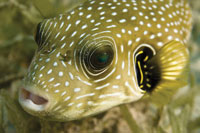 Pufferfish Teeth Care
Because their teeth are constantly growing, pufferfish
Pufferfish Teeth Care
Because their teeth are constantly growing, pufferfish
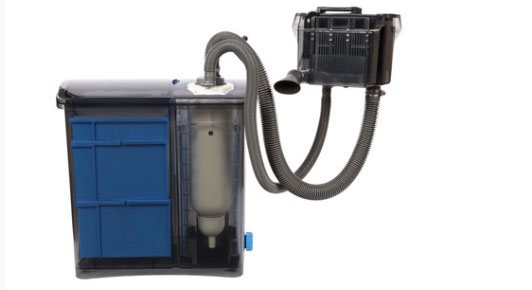 Aquarium Filtration Done Right
Today, keeping unique aquatic species is now commonplace tha
Aquarium Filtration Done Right
Today, keeping unique aquatic species is now commonplace tha
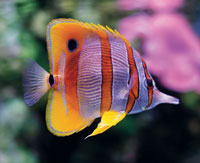 Aiptasia Anemone
Aiptasia Anemone
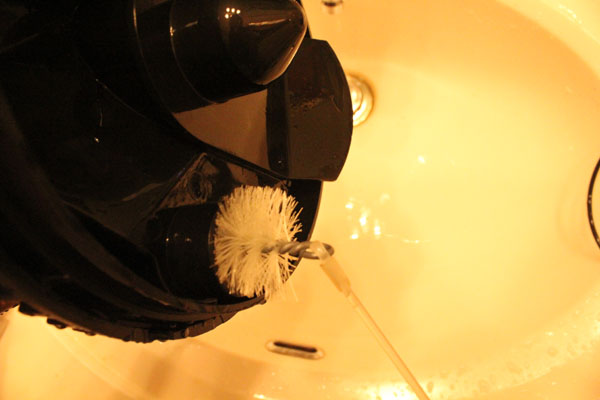 How to Maintain Your Aquarium Filter
Aquarium filtration saw monumental advances in technology du
How to Maintain Your Aquarium Filter
Aquarium filtration saw monumental advances in technology du
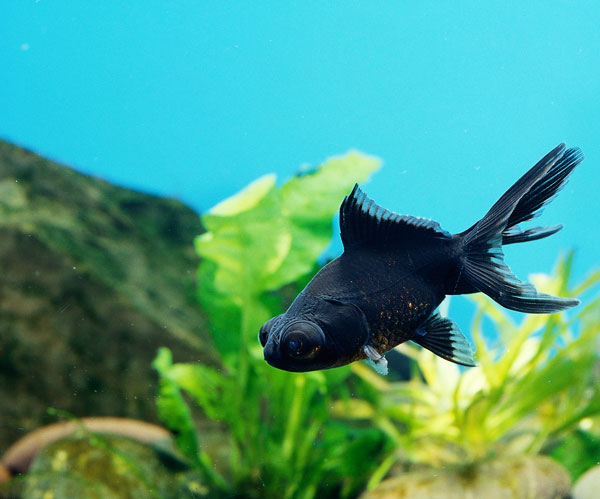 Fish and Fungus
Black Moor Q. I have two large black moor goldfish, one larg
Fish and Fungus
Black Moor Q. I have two large black moor goldfish, one larg
Copyright © 2005-2016 Pet Information All Rights Reserved
Contact us: www162date@outlook.com